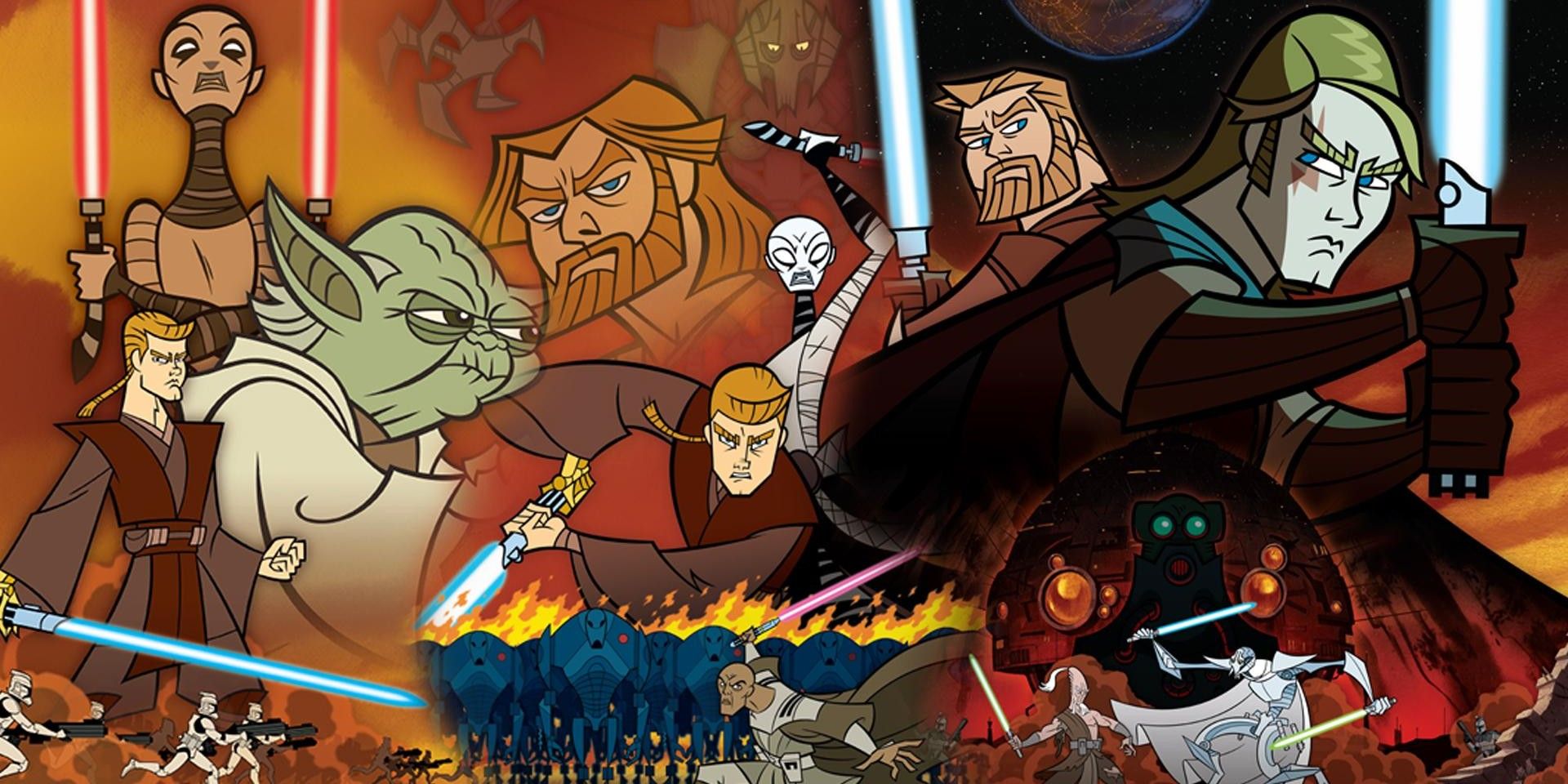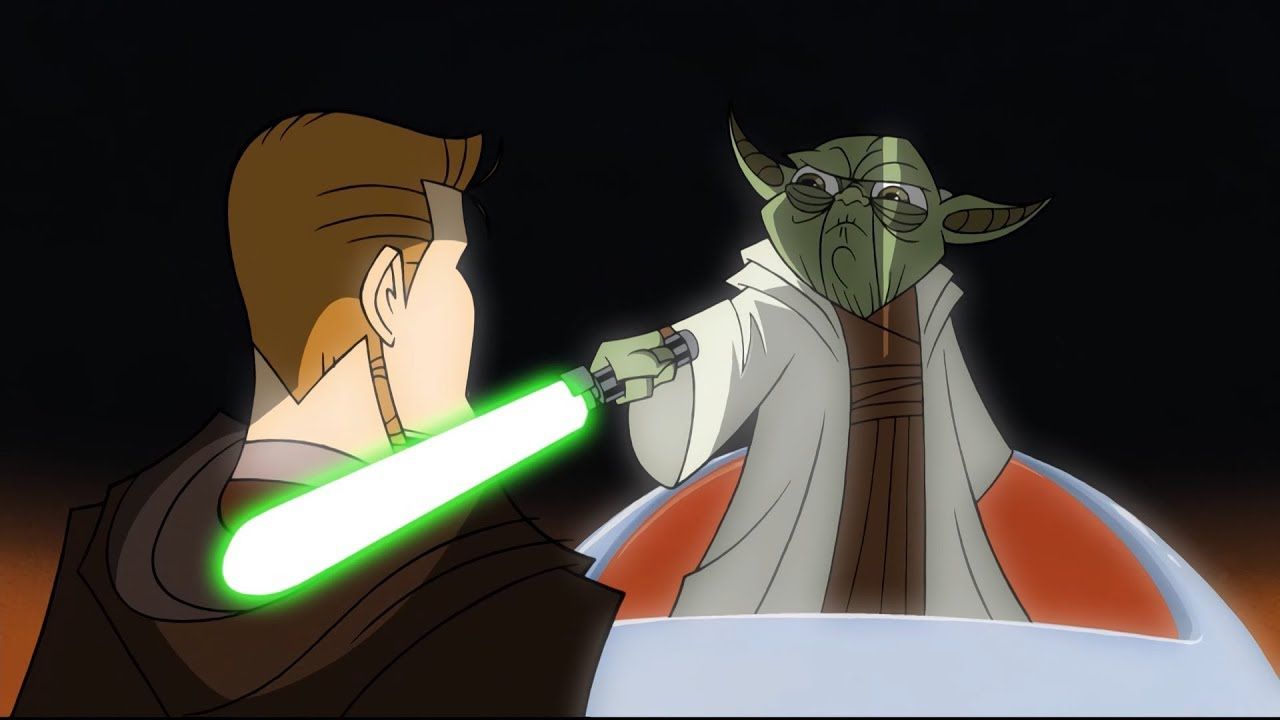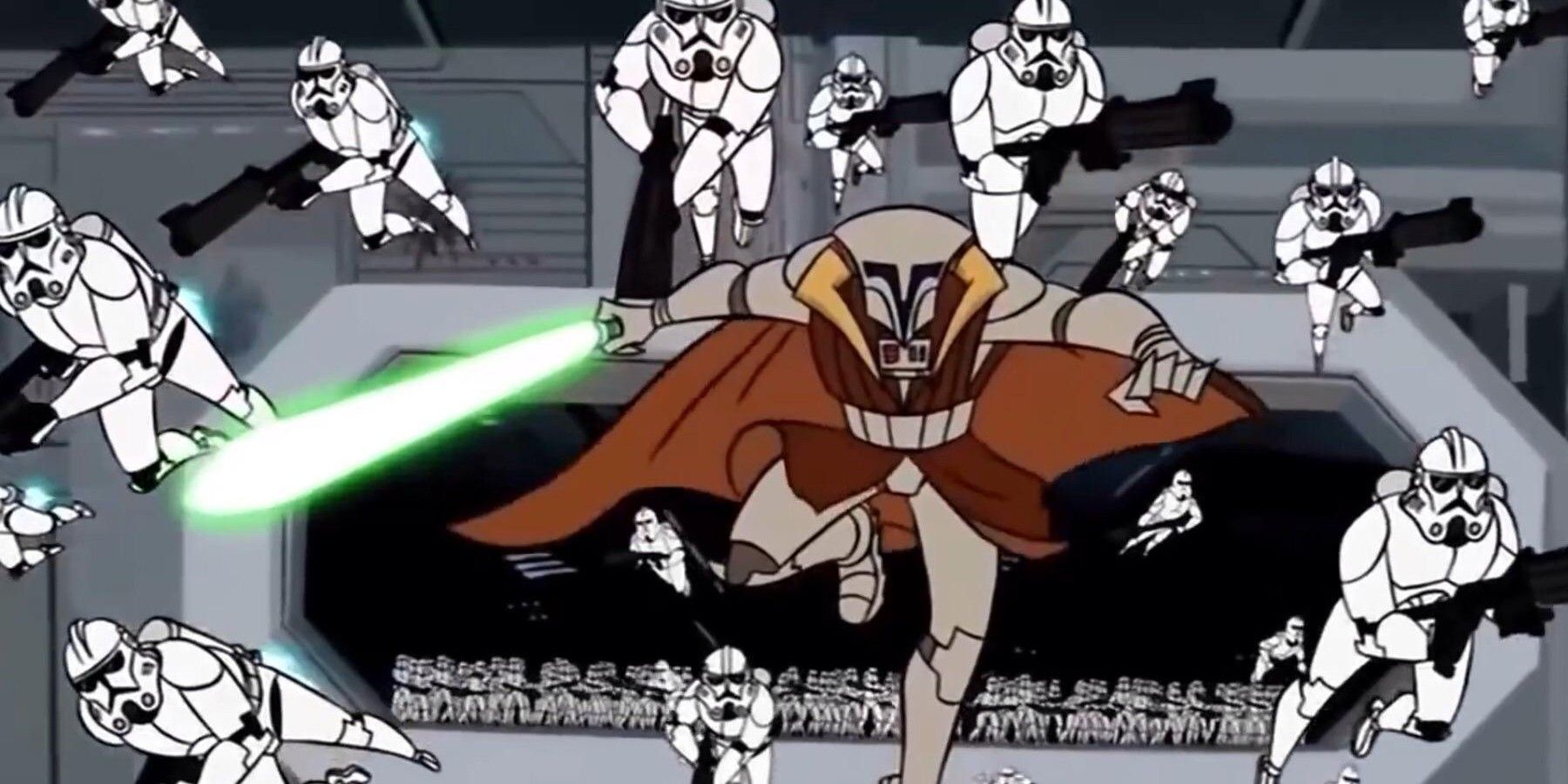
Even though Genndy Tartakovsky’s Star Wars: Clone Wars is no longer part of official canon, Disney recently added the animated series to the Star Wars Vintage Collection on Disney+. It was wildly successful when it was released in 2003 and 2004, winning three Emmy Awards. As the original bridge between Attack of the Clones and Revenge of the Sith, it remains a fan-favorite piece of Star Wars history.
The series gave writers a chance to explore characters and stories that the Star Wars movies did not have time to address, while also showing the true scope of the galactic conflict. That type of storytelling is always developed from multiple different sources, but more often than not, it has a foundation in real life occurrences. Since this is the case, perhaps the reason that the series was so successful in depicting the Clone War was that it repeatedly referenced facts and visuals from ancient military history.

The term Jedi knight automatically evokes thoughts about medieval sword fighting, castles and chivalry, but Tartakovsky’s Clone Wars focuses on the historicity of the term. Namely, one scene showed the event where Anakin officially became a Jedi, and the ceremony is similar to a medieval knighting ceremony. Anakin knelt in front of Yoda who said, “Anakin Skywalker, by the right of the council, by the will of the Force. Dub thee I do, Jedi, knight of the Republic.” While saying this, Yoda placed his lightsaber over each of Anakin’s shoulders and cut off his Padawan’s braid, thereby, granting him the status of official Jedi knight. This is very similar to how a squire knelt before an experienced knight or lord, who then touched each of his shoulders with the flat of their sword to indicate that the squire had been given the status of knight.
Another medieval reference came with the introduction of the terrifying bounty hunter Durge. Obi-Wan was winning a battle on Muunilinst when Durge appeared and tried to change the tide of the fight. He and his specialized droid battalion mounted speeders and attacked the Republic front line with their spears and lances. Obi-Wan was quick to respond in kind, and his clones charged the attackers on their own speeders. The whole exchange looked reminiscent of a medieval cavalry fight. It did not stop there, however, because after the original attack, Obi-Wan and Durge were left to fight alone. Staying on their speeders they charged each other in a sci-fi version of a jousting match.
Tartakovsky was not satisfied with only medieval references, so he went back even further in history. Assajj Ventress was introduced with a clear reference to the Roman Colosseum, where prisoners or other fighters fought to the death in gladiator matches for the favor of the emperor. Count Dooku was watching this type of show when Ventress appeared out of nowhere as a lithe assassin. Her Force-assisted combat skills easily outmatched her opponents, and she won the favor and recognition of Count Dooku.

There were also visuals from Ancient Greece. In a scene during the Battle of Coruscant, Jedi Master Saesee Tiin saw that one of the Republic’s cruisers was about to go down, so he decided to commandeer a ship from the enemy. When he went into space, he donned a helmet that was strikingly similar to the Corinthian helmet. It’s t-shaped visor and small eye holes were made famous by the Spartan hoplites, as their war-like society dominated many of the land wars in ancient Greece.
A second Greek reference came during the opening scene of the second installment. A group of ARC troopers were flying in to rescue three Jedi from the murderous and horrifying General Grievous. A set of eyes and a mouth were painted on the bow of their gunship, probably because animators wanted their ship to stand out, so they designed it with imagery from history. Ancient Greek trireme warships were often painted in a similar fashion so that the last thing that an enemy saw before being rammed was the boat's open maw coming toward them.
The oldest thing in history that Tartakovsky’s Clone Wars referenced was probably when Master Windu took over a droid fighter and rode it over Coruscant like a chariot. These horse-drawn vehicles of death were common throughout ancient history, but they were first made famous in Egypt and perfected in Persia. The equivalent of an ancient tank, chariots offered their riders stability, speed and protection. It makes sense that Master Windu, the most warlike of the Jedi, was the one to pilot the equivalent of a chariot.
0 Comments